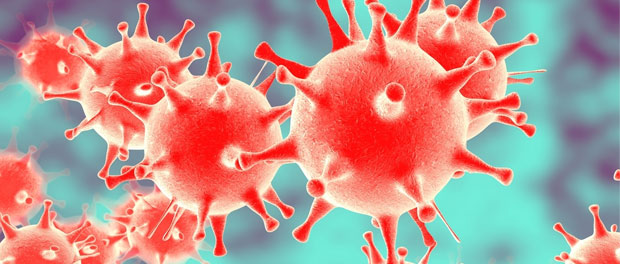
If you’ve ever had a cold sore – you know those pesky, unsightly blisters that pop up on your lip right before an interview or a first date – you may have herpes. But, wait, the herpes simplex virus (HSV) is probably not as bad as you think and it’s very common. There are actually two different types. Type 1 is associated with oral herpes, which is the virus most likely causing the cold sores, whereas type 2 is associated with genital herpes. In actuality, cold sores are often a result of stress endured by neurons containing HSV.
Scientists from the University of North Carolina School of Medicine have recently found that the virus can reactivate with the help of epigenetic mechanisms known as histone modifications. Various modifications to histones, the proteins that DNA wraps around, impact the virus’s gene expression and its ability to become active.
The herpes simplex virus is incredibly common, infecting around 90 percent of people in the U.S. and leading to eye infections, cold sores, lesions, and possibly even inflammation of the brain known as encephalitis. VZV is a virus closely related to HSV that can lead to shingles and chicken pox. In a recent blog article, another epigenetic mechanism known as DNA hydroxymethylation was shown to control viral gene expression in human herpesvirus 4, or the common cancer-causing Epstein-Barr virus.
“The proteins we’ve shown to be important for viral reactivation are almost exclusively found in neurons, so they do represent a good therapeutic target,” explained the first author Anna Cliffe, PhD, who is also a postdoctoral fellow in the Cell Biology and Physiology department and an expert in virology. Researchers have understood that the reactivation of viruses is triggered by stress. This new study shows how reactivation can be triggered by stress at the cellular level.
The researchers used primary neurons from mice in their study since these rodents possess nearly identical cellular pathways. Their epigenetic findings can be found in Cell Host and Microbe.
The paper’s senior author and professor of cell biology and physiology at UNC, Mohanish Deshmukh, said, “We’re excited about the possibility that this stress-activation pathway exists in humans. All of the elements of these pathways are found in human neurons. And we know that stress reactivates herpes simplex virus in humans.”
Previous research found that HSV is dormant or inactive in neurons. Because Deshmukh specializes in neuron survival as well as neuron death, he thought that the virus might select neurons for hosts because they are survivors. Contrary to other types of cells, neurons are not eager to trigger cell death even when a virus infects them.
To explore how HSV is able to reactivate in mouse primary neurons, Deshmukh and Cliffe designed an experimental assay to make the virus go latent and then reactivate. They were able to study pathways of specific cellular proteins thought to play a role in reactivation of the virus. They were curious whether HSV could tell when the neurons were experiencing stress and, in response, activate an escape pathway.
The team looked at c-Jun N-terminal kinase (JNK), a protein known to be associated with stress. In order to simulate the release of corticosteroids, which is what happens when our body is stressed, they administered a corticosteroid to trigger neuron death and activate the JNK pathway. They also added chemicals to mimic the loss of nerve growth factor.
Just before the virus began to leave the neurons, they discovered that the JNK protein pathway became activated. This pathway includes dual leucine zipper kinase (DLK) and JNK-interacting protein 3 (JIP3).
“We then used a chemical inhibitor to block the JNK pathway to see if that stopped viral reactivation,” Deshmukh said. “And it had a spectacular effect. When we inhibited JNK, the virus was no longer able to reactivate.”
The researchers discovered that HSV can reactivate despite the repressed state of the virus’s DNA inside the neurons. It accomplishes this reactivation via HSV gene expression. But because histone demethylation did not occur to the DNA of the virus, the histones were still closely packed together. When histones are demethylated, or methyl groups are removed, the packaged DNA known as chromatin is loosened and more accessible, thereby allowing increased gene expression to take place. However, even with the tightly packaged chromatin and methyl marks, the virus was able to undergo gene expression.
“Most scientists who study the genome would be surprised with that finding,” Deshmukh said. “The methyl marks — these epigenetic modifications — must be taken off before DNA can be opened. And that’s true. But we’ve found a great case where we see gene expression even in the presence of methyl marks.”
Cliffe’s studies demonstrate that HSV modifies its chromatin right beside the methyl marks via phosphorylation. Histone phosphorylation is another histone modification that impacts gene expression. Additional histone modifications include ubiquitination and SUMOylation.
Deshmukh explains that these methyl marks added to histones act as brakes and do not allow gene expression to occur. Phosphorylation, on the other hand, essentially releases these brakes just enough so that a small amount of viral gene expression can take place. This is referred to as the methyl/phospho switch.
They also found that the JNK pathway had to be activated in order for histone phosphorylation to take place. These experiments, therefore, connect the stress-activated pathway to the earliest adjustments to the viral DNA.
The research team saw that once phosphorylation occurs, the virus requires the undoing of histone methylation, to enable the virus to complete the process of reactivation. This results in the virus fully forming outside of the neuron, leading to cold sores or, in rare cases, encephalitis.
For future research, this new model of HSV infection and reactivation should be investigated using human neurons as opposed to mice neurons. If this can be accomplished, and these results regarding the involvement of JNK pathway and viral reactivation hold true for humans, then treatments could be developed for diseases related to HSV and other comparable viruses.
Source: Cliffe, A.R., Arbuckle, J.H., Vogel, J.L., Geden, M.J., Rothbart, S.B., Cusack, C.L., Strahl, B.D., Kristie, T.M., Deshmukh, M. (2015). Neuronal Stress Pathway Mediating a Histone Methyl/Phospho Switch Is Required for Herpes Simplex Virus Reactivation. Cell Host & Microbe, 18 (6): 649.
Reference: UNC Health Care. Discovery shows how herpes simplex virus reactivates in neurons to trigger disease. 9 Dec 2015. Web.


